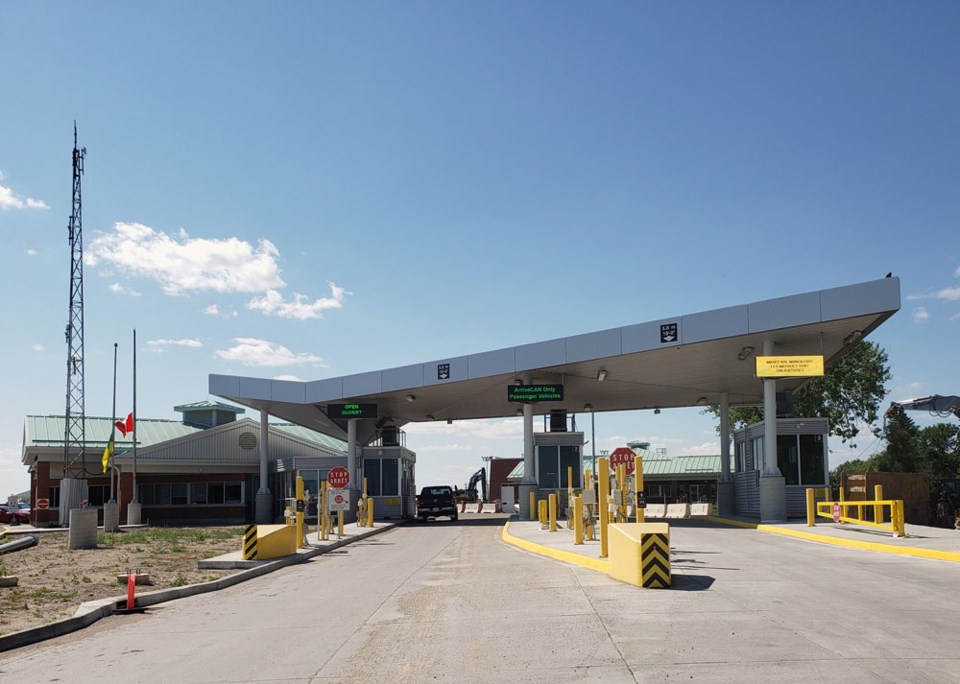Yet that’s the situation we find ourselves in with the Canada-U.S. border – the longest international border in the world.
Americans who are fully vaccinated against the COVID-19 virus are able to cross the border into Canada, and have been able to do so for a few weeks. And when the border was reopened to U.S. travellers, many logically expected that it would be a matter of time before fully vaccinated Canadians could head to the U.S. for the first time in 17 months.
That’s not the case.
To the dismay of many, the U.S. has decided that Canadians won’t be able to venture to the U.S. for at least another month. The number of cases of the Delta variant was cited as the reason for the decision.
Canadians who were looking forward to venturing down south for some cross-border shopping, or for a sporting event, or to visit a favourite tourist attraction, will have to keep waiting.
It’s particularly frustrating for Canadians who haven’t been able to go to the U.S. to visit a loved one since March 2020. Their hopes were given a boost once Americans were allowed to come into Canada, but they have to keep waiting to go to the U.S.
The ongoing border closure is hard on communities whose economies rely heavily on cross-border traffic. It’s become another hardship at a time with so many economic challenges.
The U.S. government’s decision to keep the Canada-U.S. border closed to non-essential traffic is also terrible timing for the federal Liberal Party, who recently called a snap federal election in an effort to gain enough seats in Parliament to have a majority government.
The Liberals come across as schmucks on this one. Americans can come to Canada, but Canadians can’t go to the U.S. for non-essential purposes.
Of course, it’s not a simple move for the U.S. If the Americans reopen the border to Canada, they have to reopen the border to Mexico, and I don’t think they’re ready to take that step. But Canadians looking to take a trip to the U.S. don’t give a damn about Mexico.
Many Canadians might want to see Canada shut down to non-essential American traffic once again, but there are a lot of people who are very happy to see Americans back in this country, most notably those in the hospitality sector. Many hotel and restaurant owners are pleased to welcome back American visitors.
Seventeen months ago, the closure of the Canada-U.S. border to non-essential traffic was one of those things that needed to happen at the start of the COVID-19 pandemic, when there were so many unknowns. Since American COVID-19 numbers were so much higher than our figures, there wasn’t exactly much appetite to have the border open again.
While there were people in the southeast who were no doubt eager to head down south, they were in the minority.
And you couldn’t just reopen the border in areas where case counts are lower, or where there’s a greater percentage of fully vaccinated people. If you’re going to reopen the border in some areas, you have to open it again everywhere.
Now that the majority of Canadians are fully vaccinated, and the majority of Americans are fully vaccinated, the border reopening shouldn’t be an issue. Yes, there are logistics that have to be worked out, but if you’ve had two doses of vaccine, then you can travel abroad.
(Of course, there will also be exemptions on the vaccination requirement for those under the age of 12, or for those who medically can’t receive the vaccine).
And people who have decided not to get the vaccine, for whatever reason, shouldn’t complain if they aren’t allowed into the U.S.
Yes, it’s concerning that we’re seeing a growing number of cases, but that shouldn’t be the determining factor in the status of the border.
We’ll see how much longer it takes before fully vaccinated Canadians are allowed to head south again, and how long this current arrangement last.
But with each passing week in which the Canada-U.S. border is only open one way, frustration for many Canadians will continue to grow.


